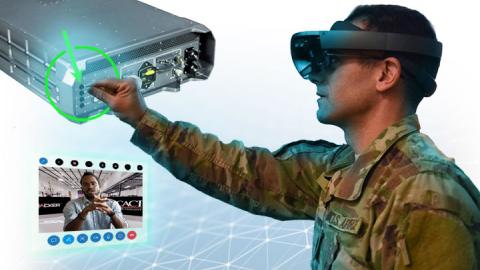Addressing the Talent Gap: Accelerating Results with “Low-to-High” Development
Agile Development at the Speed of Mission

COVID-19 has changed many aspects of everyday life, and it has certainly changed the dynamics of workplaces, client interactions and even security clearance processes. While the market and workforce availability have always been fluid, the pandemic has not only highlighted an imbalance in supply and demand for highly cleared talent, it has exacerbated it as well.
A “low-to-high” approach to software development can address the current talent shortage, successfully delivering the same capability outcomes with a broader talent pool. Low-to-high mitigates external forces — such as the pandemic fallout, an extended clearance investigation process and an already-shrinking labor pool of highly cleared talent — and focuses on results. As more people retire, shift industries or seek work-from-home jobs, offering a low-to-high solution may be the solution for the intelligence community (IC) to continue to advance its capabilities.
In this interview, KC Wilberg, CACI’s Vice President of Intelligence Application Services, discusses how CACI is partnering with the Intelligence Community (IC) to find innovative ways to solve these labor challenges and deliver vital capabilities faster. If you wish to schedule an interview with KC and learn more about CACI’s work with low-to-high development, contact CACI Corporate Communications at [email protected].
With very few customers able to sponsor people for higher clearances, how can we meet the need for the rising demand for cleared talent?
There is a much greater need to perform SecDevOps than there is a supply of talent to do the work. COVID-19 has driven a lot more people out of the IC workforce – those who no longer wish to work in the confines of a sensitive compartmented information facility (SCIF) have found jobs where they can work from home or they now work in the commercial sector. And even if the appropriate level of clearances are able to be sponsored to bring new talent into the workforce, the process averages 18-24 months. Companies need to shift with the change in the market – and they can alleviate some of the pressure in the labor market by moving as many activities as possible to be performed at lower clearance levels. This allows more talent – that is uncleared or holds lower level clearances – to fill positions that help the IC organizations meet their needs.
At CACI, we have partnered with several customers to implement a “low-to-high” or more aptly “any-to-high” development process where we use uncleared or lower cleared developers to leverage our processes and our expertise to securely provide the government with capabilities at the speed of mission. Along with the use of best practices from our Agile Solution Factory delivering Agile development at scale, our low-to-high development method leverages continuous integration/continuous delivery (CI/CD) processes for the IC to achieve rapid, secure, scalable, and affordable development. Our unrivaled domain knowledge and process expertise generates results for our customers in a fraction of the time it takes to complete a fully classified development process.
How does low-to-high development work with uncleared personnel?
When properly implemented, low-to-high development allows organizations to securely advance capabilities developed from lower classification environments into more highly classified environments. This means that organizations are able to use a wider talent pool of uncleared or lower-cleared developers and software experts. The code itself isn’t typically classified – but the data is. If you code on the “low side,” or unclassified side, without the need for a fully classified environment, you can leverage all the best practices, tools, and talent that are available. The trick is converting that development activity from the low side to a classified environment – the “high side” – in a consistent, repeatable, and security-approved manner while minimizing integration challenges. This is where strong customer partnerships, high side environment emulation tools, and the expertise of having completed several low-to-high development efforts becomes absolutely essential. We have worked with the customer security teams to use the right tools and right processes to migrate the unclassified development work to a highly classified environment.
That’s exactly what we’ve been doing for the past several years – and it’s allowed us to access a greater bench of talent to rapidly develop solutions and capabilities at a lower cost. As one customer put it, the combination of CACI’s low-to-high and ASF-based development practices “enabled the delivery of more capability in six weeks than the previous contractor executed in six months.”
How does low-to-high development affect the future of the contracting industry? How is CACI leading the way?
As I said before, the industry is undergoing a significant market shift where the demand for cleared development resources is ever increasing and the supply is dramatically decreasing. While felt with lesser intensity before the pandemic, the need for unclassified development activity increased significantly due to COVID-19. With customers asking for more work than can be delivered with the existing cleared candidate pool, companies now must partner with their customers to do things differently and innovate the way we can deliver the expertise and technology required to meet mission demands. This dynamic results in the need to shift the mindset from one where “only on the high side” is the dominant perspective to one that asks: “What must be on the high side?” This also gives customers the ability to shift the approach of how they contract for the work they need and move to more of a completion-based model versus level-of-effort contracts where activity is driven by the desired outcomes over the bodies delivering those outcomes.
We do that today at CACI. We help define the process, the tools, and the way any-to-high development can be successful in and out of the customer’s environment. We’ve solidified an approach with our customers that makes the process secure and repeatable with tools and the contractor workforce that have been approved to enable that process.
Agile Development at the Speed of Mission



